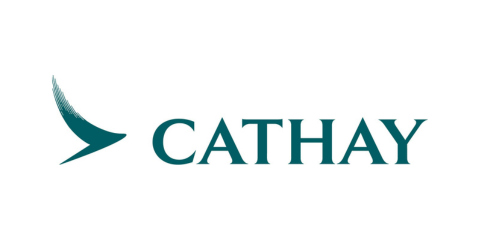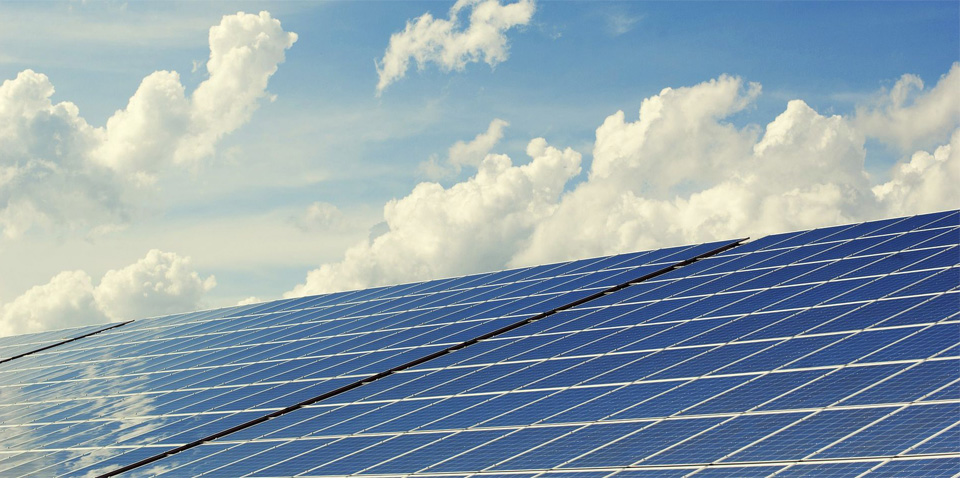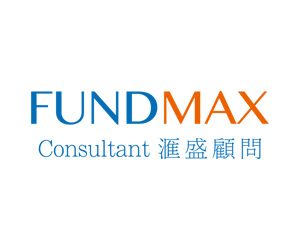Want to be in the loop?
subscribe to
our notification
Business News
SOCIO-ECONOMIC SITUATION IN THE FIRST QUARTER OF 2016
The growth in the first Quarter of this year was higher than the first Quarter of years 2012-2014[1], but there were signs of slowdown compared with the increase of 6.12% in the same period in 2015.
About the structure of economy in the first Quarter of this year, the agriculture, forestry and fishery accounted 11.44%; the industry and construction accounted for 34.24%; the service represented 43.61% (Product taxes less subsidies on production accounted for 10.71%). Corresponding structures in the same period in 2015 were 12.35%; 34.90%; 42.14% (product taxes were 10.61%).
In terms of GDP to use in the first Quarter of 2016, the final consumption rose 6.87% against the identical period in 2015, contributed 5.39 percentage points; accumulated assets grew by 8.3%, contributed 1.56 percentage points; trade balance of goods and services reduced 1.49 percentage points of the overall growth rate.
+ Gross Domestic Products in the 1st Quarter of 2016
2. Production of agriculture, forestry and fishery
The production value of this sector at 2010 comparative prices in the first quarter of this year was estimated to reach 178.8 trillion dongs, went down by 1.3% from the similar period last year, of which agriculture gained 137 trillion dongs, decreased by 2.5%; forestry achieved 6.4 trillion dongs, increased by 6.3%; fishery obtained 35.4 trillion dongs, climbed by 2.3%.
a. Agriculture
As of mid-March, the country cultivated 3021.6 thousand hectares of winter-spring rice, equaling 98.8% from the same period last year. The cultivated area in the North was 1100.3 thousand hectares, equaling 99%; in the South was 1921.3 thousand hectares, equaling 98.8% from the similar period in 2015.
As of mid-March, localities over the countries cultivated 347.4 thousand hectares of maize, equaling 97.4% against the identical period last year; 69 thousand hectares of sweet potato, equaling 93.5%; 125.7 thousand hectares of peanut, equaling 98.7%; 34.1 thousand hectares of soybean, equaling 77.1%; 518.2 thousand hectares of vegetables, equaling 103.8%.
The extreme cold weather in the North at the end of January had a great influence on cattle breeding in localities[2]. The country’s flock of buffaloes in March was estimated to reduce by 2% from the same period last year; flock of oxen raised by about 1%, of which dairy cows rose 8%; flock of pigs increased by 2.3%; flock of poultry went up by 2%. Output of live-weight buffalo meat for slaughter in three beginning months of the year decreased by 0.4%; output of live-weight beef grew by 2%; output of live-weight pork rose 3.9%; poultry meat production climbed by 4.6%.
b. Forestry
The concentrated planted forest area in the first three months of the year was estimated to reach 12.5 thousand hectares, down 2.3% from the similar period last year; wood production gained 1613 thousand m3, a rise of 7%; firewood production gained 7.7 million ster, up 1.3%.
As of mid-March, damaged forest area over the country was 823.1 hectares, 5.1 times what it was in the same period last year, of which burnt forest area was 726 hectares, increased 9.8 times; destroyed forest area was 97.1 hectares, up 13.6%.
c. Fishery
In three beginning months of the year, fishing production was estimated to reach 1271.7 thousand tons, increased by 2.9% over the same period last year, of which fish gained 934.2 thousand tons, up 3%; shrimp achieved 124.5 thousand tons, approximately the production in the same period last year. Production of aquaculture in three months gained 549.6 thousand tons, up 1.9% over the similar period last year, of which there were 388.3 thousand tons of fish, up 2%; 91.9 thousand tons of shrimp, down 1%.
Production of fishing caught achieved an estimate of 722.1 thousand tons, up 3.7% from the identical period, of which fish reached 545.9 thousand tons, up 3.8%; shrimp reached 32.6 thousand tons, up 2.8%. Sea catching in three months was estimated to attain 683.8 thousand tons, an increase of 3.9% against the last year’s same period; inland catching achieved an estimate of 38.3 thousand tons, 0.5% increase.
+ Production value of agriculture, forestry and fishery at 2010 comparative prices
+ Agricultural production as of March 15, 2016
+ Fishing production in the first Quarter of 2016
3. Industry
Generally, in the first quarter of this year, Industrial Production Index (IPI) was increased by 6.3% from the same period last year, lower than the growth in 2015’s similar period[3]. Of which the manufacturing climbed by 7.9%, contributed 5.6 percentage points to the overall growth rate; the electricity power generation and distribution rose 13.1%, contributed 0.9 percentage points; the water supply and sewage treatment went up by 9.4%, contributed 0.1 percentage points; the mining and quarrying fell by 1.2%, reduced 0.3 percentage points of the general growth rate.
Generally, in two beginning months of the year, consumption index for the whole manufacturing increased by 9.1% over the same period last year. Stock index for the entire manufacturing as of 01 March 2016 went up by 8.7% from the same period in 2015. Average stock rate for the whole manufacturing in two beginning months of the year was 78.2%.
The number of laborers working in industrial enterprises as of 01 March 2016 rose 5.9% compared to the same period last year, of which the State sector increased by 1.4%; the non-State sector by 4.1%, and the FDI sector by 8%. As of above time, the number of laborers working in the mining and quarrying went up by 0.4% over the same period last year; in the manufacturing by 6.4%; the electricity power generation and distribution by 0.3%; the water supply and sewage treatment by 2.8%.
+ Industrial Production Index
+ Main industrial products
+ Consumption and stock indexes of the manufacturing
+ Labor employed index (LEI) for industrial enterprises
4. Operation of enterprises
a. Business registration situation [4]
In the first quarter of this year, the country had 23767 enterprises registered for new establishment with a total registered capital of 186 trillion dongs, an increase of 24.8% in the number of businesses and an increase of 67.2% in the registered capital against 2015[5]. The average registered capital per enterprise reached 7.8 billion dongs, up 34.5%. The expected number of laborers generated jobs in the newly established enterprises in the first quarter was 322.2 thousand persons, up 21.5% over the same period in 2015.
The number of re-operated enterprises in the first quarter of this year was 9376 enterprises, up 84.1% from the identical period[6]. The number of enterprises which finished the procedure for dissolving, terminating business activities in the first quarter was 2919 ones, increased by 13.8% from the same period last year, of which most of them are small-scale businesses with a registered capital of less than 10 billion dongs (accounting for 93%). By types of enterprise, of the total number of enterprises which finished the procedure for dissolving, terminating operations, there were 1181 single member limited liability companies (accounting for 40.5%); 877 two-member limited liability companies (accounting for 30.0%); 473 private businesses (accounting for 16.2%) and 388 joint-stock companies (representing 13.3%).
The number of enterprises having difficulty forced to temporarily cease operations in the first quarter was 20044 ones, an increase of 23.9% over the identical period last year, of which 8026 enterprises registered for time-limited temporary cessation of operations and 12018 enterprises suspended businesses waiting for closing the enterprise code or without registration. Of total enterprises having difficulty forced to temporarily cease operations with registration, there were 2883 single member limited liability companies (accounting for 35.9%); 2841 two-member limited liability companies (accounting for 35.4%); 1408 joint-stock companies (taking 17.5%) and 894 private businesses (representing 11.2%). For enterprises suspended operation waiting for closing the enterprise code or without registration, there were 4811 single member limited liability companies (accounting for 40.0%); 3885 two-member limited liability companies (accounting for 32.3%); 1899 joint-stock companies (taking 15.9%) and 1422 private businesses (representing 11.8%) and 01 partnership.
b. Business trends of enterprises
Results of the business trend survey from manufacturing enterprises as follows:
42.3% of enterprises assessed the situation of business and production in the first quarter was more positive than the previous quarter; 27.1% had difficulties and 43.7% had the stable business and production situation. Expecting the second quarter compared to the first quarter of this year, 53.3% of enterprises evaluated trends to be better; 11.2% of enterprises forecasted to be worse and 35.5% of enterprises thought that their business and production situation would be stable.
Regarding the production volume, 31.4% of enterprises assessed the production volume in the first quarter of this year rose compared to the previous quarter; 29.5% evaluated the production volume went down and 39.1% thought it was stable. About the trend of the second quarter in comparison with the first quarter, 54.2% of enterprises forecasted the production volume would be up; 10.6% forecasted it would be down and 35.2% forecasted it would be stable.
About purchase orders, 29.0% of enterprises had the higher number of purchase orders in the first quarter of this year than the previous quarter; 27.1% had the number of purchase orders reduced and 43.9% had the stable number of purchase orders. The trend of the second quarter in comparison with the first quarter was forecasted to be better: 50.5% of enterprises expected to have the higher number of purchase orders; 11.3% expected the number of purchase orders to be dropped; 38.2% expected to have the stable number of orders.
Regarding export orders of the first quarter in comparison with the previous quarter, 23.2% of enterprises confirmed to have higher number of export orders; 24.5% had the number of export orders fell and 52.3% had stable number of export orders. The trend of the second quarter compared with the first quarter: 38.6% of enterprises expected to raise the number of export orders; 12.6% expected to go down and 48.8% expected to be stable.
Regarding production costs, 23.6% of enterprises confirmed production costs per unit of product in the first quarter of this year increased against the previous quarter; 10.8% of enterprises said that production costs went down and 65.6% of enterprises assessed costs were stable. In the trend of 2016’s second quarter, 18.5% of enterprises expected production costs would raise compared to the first quarter; 11.5% said that costs would reduce and 70% expected production costs would be stable.
Regarding the product selling price in the first quarter of this year compared to the previous quarter, there were 14.6% of enterprises with increased selling price of products; 12.3% of enterprises with lower selling price and 71% of enterprises with stable product selling price. Expected product selling price in the second agaisnt the first quarter as follows: 16.7% of enterprises forecasted the selling price would be higher; 8.2% forecasted the selling price would be lower; and 75.1% forecasted it would be stable.
About the stock of products, 18.5% of enterprises had increased inventory in the first quarter from the previous quarter; 31.1% had reduced inventory and 50.4% kept stable. The trend of the second quarter in comparison with the first quarter: 14.9% of enterprises forecasted the inventory would go up; 30.8% assessed it would go down and 54.3% forecasted it would keep stable.
The inventory of raw materials in the first quarter of 2016 compared to the previous quarter as follows: there were 17% of enterprises with increased inventory volume; 28.7% with decreased inventory volume and 54.3% had the inventory volume kept intact. Expected inventory of raw materials in the second quarter against the first quarter: 14.9% of enterprises forecasted the inventory of raw materials would increase; 28.4% forecasted it would be down and 56.7% said that it would have no change in the inventory of raw materials.
Regarding the employment in the first quarter against the previous quarter, 14.3% of enterprises confirmed that the number of employees went up; 16.2% of enterprises confirmed it fell; and 69.5% of enterprises it kept stable. Expecting the labor scale in the second quarter in comparison with the first quarter, 21.2% of enterprises forecasted it would go up; 8.2% forecasted it would go down; and 70.6% of enterprises forecasted it would be stable.
5. Service activities
a. Retail sales of consumer goods and services
Total estimated retail sales of consumer goods and services in the first quarter of this year reached 859.6 trillion dongs, up 9.1% compared to the same period last year. If the price factor were excluded, the growth rate would be 7.9%, lower than the increase of 9.2% in the same period last year, as the average price index in the first quarter of 2016 was higher than it was in the same period in 2015.
By kinds of economic activity, retail sales of goods in the first quarter of this year gained 657 trillion dongs, accounted for 76.4% and rose 9.2% over the similar period last year. Estimated sales of accommodation and catering services attained 97.3 trillion dongs, accounted for 11.3% of the total and up 8.5%. Sales of travelling achieved 6.9 trillion dongs, accounted for 0.8% and up 8.8%. Other services reached 98.4 trillion dongs, accounted for 11.5% and up 8.9% from the identical period last year.
+ Total retail sales of consumer goods and services
b. Carriage of passengers and cargos
Passenger carriage in the first quarter of this year was estimated to reach 884.5 million passengers, raised by 8.1% and 42.2 billion passengers-kilometers, by 9.7% from the same period last year. Passengers carried by road achieved 833.6 million passengers, a rise of 8.2% and 27.9 billion passengers-kilometers, a rise of 7%; by airway: 8.6 million passengers, an increase of 22% and 12.4 billion passengers-kilometers, an increase of 18.2%; by railway: 2.6 million passengers, a drop of 1.4% and 1.1 billion passengers-kilometers, a decline of 4.1%; by seaway: 1.4 million passengers, 5.1% increase and 67.1 million passengers-kilometers, 4.8% growth.
Cargo carriage in the first quarter reached an estimate of 303.5 million tons, up 7% and 59.9 billion tons-kilometers, up 3.5% from the last year’ same period. Of which the domestic transport gained 295.2 million tons, increased by 7.1% and 27.6 billion tons-kilometers, by 6.2%; overseas transport reached 8.3 million tons, grew by 5.5% and 32.3 billion tons-kilometers, by 1.3%. Cargo transport by road obtained 235.1 million tons, up 7.9% and 14.5 billion tons-kilometers, up 9.6%; by waterway: 52 million tons, up 5.4% and 10.6 billion tons-kilometers, up 5.1%; by seaway: 14.9 million tons, up 1.6% and 33.7 billion tons-kilometers, up 1.3%; by railway: 1.3 million tons, a decline of 20.9% and 0.8 billion tons-kilometers, down 22%.
+ Carriage of passengers and cargos
c. International visitors to Vietnam
Generally, in three beginning months of the year, international visitors to Vietnam was estimated to reach 2459.2 thousand arrivals, up 19.9% from the same period last year, of which visitors coming by airway gained 1986.6 thousand arrivals, up 16.8%; by road: 435.6 thousand arrivals, up 50.5%; by seaway: 37 thousand arrivals, down 40.1%.
In three beginning months of the year, visitors to Vietnam from Asia achieved 1684.6 thousand arrivals, increased by 25% against the similar period last year. Visitors from Europe gained an estimate of 447.3 thousand arrivals, went up by 11% from the last year’s identical period. Visitors from America reached 220.8 thousand arrivals, rose 11.4% over the same period last year. Visitors from Australia achieved 100.1 thousand arrivals, up 4.3%. Visitors from Africa attained 6.4 thousand arrivals, down 9.5%.
+ International visitors to Vietnam
II. STABILIZE MACRO ECONOMY, CURB INFLATION
1. Banking, insurance
As of 21 March 2016, the total means of payment increased by 3.08% over the end of 2015 (a rise of 2.09% in the same period last year). Capital mobilization of commercial banks grew by 2.26% (0.94% increase in the same period last year); credit growth reached a growth of 1.54%(1.25% rise in the same period last year).
Insurance market in three beginning months of the year maintained the positive growth. There were 61 insurance companies working on the market, of which the field of non-life insurance had 29 businesses and 01 foreign branch; the field of life insurance had 17 businesses; the field of insurance brokerage had 12 businesses. Total premium revenue of the market in the first quarter was estimated to reach an increase of 20% compared to the same period in 2015.
2. Construction, investment
a. Construction
The production value of construction at current prices in the first quarter of 2016 reached 201.5 trillion dongs, of which the state sector gained 16.9 trillion dongs, accounted for 8.4%; the non-state sector achieved 171.5 trillion dongs, accounted for 85.1%; and the FDI sector obtained 13.1 trillion dongs, accounted for 6.5%.
The production value of construction in the first quarter at 2010 comparative prices obtained 164 trillion dongs, up 10.1% over the same period in 2015, of which the state sector gained 13.9 trillion dongs, up 11%; the non-state sector achieved 139.3 trillion dongs, up 11.4%; and the FDI sector obtained 10.8 trillion dongs, down 6%.
b. Development investment
Estimated realized social investment capital in the first quarter of this year at current prices reached 273.6 trillion dongs, went up by 10.7% over the similar period last year and equaled 32.2% of GDP, of which the State sector’s capital gained 96.8 trillion dongs, accounted for 35.4% of the total capital and increased by 7.8% from the identical period last year; the non-State sector’s capital obtained 100.5 trillion dongs, took 36.7% and grew by 11.5%; the FDI sector’s capital attained 76.3 trillion dongs, represented 27.9% and raised by 13.5%.
Realized investment capital from the State budget in the first quarter reached an estimated of 42.4 trillion dongs, equaled 17.2% of the yearly plan and increased by 9.2% from the last year’s same period. Of which the capital under central management gained 9.3 trillion dongs, equaled 16.5% of the annual plan and increased by 14.2% from the same period last year; the capital under local management achieved 33.1 trillion dongs, equaled 17.4% of the yearly plan and grew by 7.9% over the similar period in 2015, of which the capital from the State budget at provincial level gained 23.8 trillion dongs, equaled 17.1% of the yearly plan and rose 11.9%; at district level: 7652 billion dongs, equaled 17.8% and equivalent to the capital in the same period last year; at commune level: 1713 billion dongs, equaled 22% and fell by 5.3%, respectively.
About the foreign direct investment (FDI), from the beginning of the year to 20 March 2016, the country had 473 newly licensed projects with the total registered capital of US$ 2740.4 million, up 77.2% in the number of projects and up 125.2% in the capital against the similar period in 2015. At the same time, 203 times of license-granted projects from the previous years were provided with additional capital of US$ 1285.9 million. Thus, the total registered capital of both newly and additionally financed projects reached US$ 4026.3 million, grew by 119.1% against the last year’s same period. Realized FDI capital in the first quarter of 2016 was estimated to gain US$ 3.5 billion, rose 14.8% from 2015’s similar period.
In three months, the manufacturing industry attracted foreign investors with the registered capital of US$ 2908 million, accounting for 72.2% of the total registered capital; the real estate business attracted US$ 239.8 million, accounting for 6%; the art, games and entertainment attracted US$ 212.2 million, accounting for 5.3%; remaining industries attracted US$ 666.3 million, accounting for 16.5%.
The country had 37 provinces and cities directly under the central management which received newly licensed FDI projects from 37 nations and territories in three beginning months of the year.
+ Realized social investment capital at current prices
+ Realized investment capital under the State budget
+ Licensed FDI projects from 01 January to 20 March 2016
3. Government revenues and expenditures
Total estimated government revenues from the beginning of the year to 15 March 2016 achieved an estimate of 182.4 trillion dongs, equaled 18% of the annual estimate, of which domestic revenues reached 152.1 trillion dongs, equaled 19.4%; collecting from crude oil achieved 7.2 trillion dongs, equaled 13.3%; from export-import balance: 22.8 trillion dongs, equaled 13.2%. Of home revenues, 35.6 trillion dongs were from non-State industrial, commercial and non-state service taxes, equaling 24.8%; 35.4 trillion dongs were from FDI enterprises (excluding crude oil), equaling 22.3%; 15.5 trillion dongs were from land use fee, equaling 30.9%; 13.2 trillion dongs were from individual income tax, equaling 20.8%; 7 trillion dongs were from tax on environment protection, equaling 18.1%; collecting from the State enterprises reached 31.8 trillion dongs, only equaling 12.4% of the yearly estate.
Total government expenditures from the beginning of the year to 15 March 2016 reached an estimate of 227.7 trillion dongs[7], equaling 17.9% of the yearly estimate. Of which, spending for development investment achieved over 40.1 trillion dongs, equaling 15.7% (spending on capital construction alone reached 40 trillion dongs, equaled 15.9%); spending for economic and social development, national defense and security, state management gained 155.7 trillion dongs, equaling 18.9%; paying debts and aids 31.9 trillion dongs, equaling 20.6%.
4. Export – Import
a. Export of goods
Generally, in the first quarter of this year, export turnovers was estimated to reach US$ 37.9 billion, increased by 4.1% from the same period last year, of which the domestic economic sector achieved US$ 10.8 billion, increased by 0.3%; the FDI sector (including crude oil) gained US$ 27.1 billion, grew by 5.8%. If the price factor were excluded, the first quarter’s export turnovers would gain US$ 39.8 billion, up 9.3% over the same period in 2015.
Regarding the structure of export goods, the group of heavy industrial goods and minerals was estimated to reach US$ 17.5 billion, grew by 4.8% from the same period last year and accounted for 46.2% of the total export turnovers, increased 0.3 percentage points against the similar period in 2015; the group of light industrial goods and handicrafts gained US$ 14.9 billion, went up by 2.7% and accounted for 39.3%, reduced 0.5 percentage points; the group of agricultural and forestry products achieved US$ 4.1 billion, climbed by 6.5% and took 10.8%, increased 0.2 percentage points; the group of fishery products attained US$ 1.4 billion, raised by 4.6% and represented 3.7%, had no change in percentage points compared to the identical period in 2015.
About the export market in the first quarter, the United States was the biggest export market of Viet Nam with an export turnover of US$ 7.9 billion, a rise of 11.1% compared to 2015’s same period. Followings were EU with US$ 7.5 billion, a rise of 9.3%; China with estimated turnovers of US$ 3.9 billion, up 8.2%; South Korea with US$ 2.4 billion, a rise of 31.5%; ASEAN with US$ 4.2 billion, a decrease of 9.9%; Japan with US$ 3.2 billion, 0.4% decline.
b. Import of goods
Estimated import turnovers in the first quarter reached US$ 37.1 billion, grew by 4.8% over the previous year, of which the domestic economic sector gained US$ 14.9 billion, down 3.5%; the FDI sector achieved US$ 22.2 billion, down 5.7%. If the price factor were excluded, the first quarter’s import turnovers this year would gain US$ 40.7 billion, up 4.4% over the same period in 2015.
Regarding the structure of import goods, the group of means of production was estimated to achieve US$ 34.1 billion, reduced by 4.7% and accounted for 91.9% of the total import turnovers (an increase of 0.1 percentage points against the similar period in 2015); the group of fuels and materials reached US$ 19 billion, went down by 4.4% and represented 51.2%; the group of consumer goods was estimated to gain US$ 3 billion, decreased by 6.3% and accounted for 8.1% (a decline of 0.1 percentage points from the same period in 2015).
About the import market in the first quarter of this year, China was the largest import market of Viet Nam with import turnover of US$ 10.4 billion, down 8% from the same period last year[8]; the next was ASEAN with US$ 5.4 billion, down 5.8%; Japan with US$ 3.3 billion, down 8.8%; EU with US$ 2.2 billion, down 14.5%; South Korea with an estimate of US$ 6.7 billion, up 2.1%.
Generally, in the first quarter of 2016, trade surplus was US$ 776 million, of which the domestic economic sector had trade deficit of US$ 4.05 billion; the FDI sector (including crude oil) had trade surplus of US$ 4.83 billion.
c) Export and import of services
Service exports in the first quarter of this year were estimated to reach US$ 2.92 billion, up 5% over the same period last year, of which travel service export gained US$ 2.02 billion, accounted for 69.2% of the total turnovers and went up by 7.4% from the same period in 2015. Estimated service imports in the first quarter achieved US$ 3.73 billion, up 5.1% over the similar period last year, of which transportation service gained US$ 2.02 billion, accounted for 54% of the turnovers and reduced by 0.7%. The first quarter’s trade deficit of services was US$ 810 million.
+ Exports
+ Imports
5. Price indexes
a. Consumer price indexes (CPI), gold and US dollar price indexes
CPI in March 2016 grew by 0.57% from the previous month, a rise of 0.99% over December 2015 and a rise of 1.69% from the same period last year. Average CPI in the first quarter of this year climbed by 1.25% compared to that in the same period in 2015.
Core inflation in March 2016 decreased by 0.09% compared to the previous month and grew by 1.64% over the same period last year. Average core inflation in three beginning months of 2016 rose 1.76% against the similar period in 2015.
Gold price index in March 2016 rose 4.87% from the previous month, 7.79% over December 2015 and 0.83% against the same period last year.
US dollar price index in March 2016 fell by 0.38% from the previous month, went down by 0.84% from December 2015, and rose 4.26% compared to 2015’s similar period.
b. Producer’s price indexes; export, import price indexes
Producer’s price index of agricultural, forestry and fishing products in the first quarter of 2016 decreased by 1.80% from the same period last year; Producer’s price index of industrial products reduced by 1.01%; price indexes of fuels and materials used for production fell by 3.38%; transportation and warehouse price index dropped by 1.75%; service price index went up by 1.84%.
Merchandize export price index in the first quarter of 2016 decreased by 4.80% from the last year. Merchandize import price index declined by 8.85% against the similar period last year. Commodity term of trade[9] in the first quarter of this year rose 4.45% over the same period in 2015.
+ Consumer price indexes, gold, US dollar price indexes and core inflation in March 2016
+ Producer’s Price Index for agricultural, forestry and fishing products in the 1st Quarter of 2016
+ Export price index in the 1st Quarter of 2016
+ Import price index in the 1st Quarter of 2016
+ Service price index in the 1st Quarter of 2016
+ Transport Charge Index in the 1st Quarter of 2016
+ Commodity term of trade in the 1st Quarter of 2016
+ Price index of materials, fuel used for production in the 1st Quarter of 2016
+ Producer’s Price Index for industrial products in the 1st Quarter of 2016
11. Labor and employment
As of 01 April 2016, the country’s labor force aged 15 and above was estimated to be 54.4 million persons, rose 761.8 thousand persons compared to 2015’s similar period. Labor force within working age as of above time was estimated to be 47.8 million persons, rose 128.3 thousand persons from the same period in 2015.
Laborers aged 15 and above having jobs in the first quarter of this year reached an estimate of 53.3 million persons, of which 22.5 million persons were working in the sector of agriculture, forestry and fishery, accounted for 42.3% of the total; 13.0 million ones were working in the sector of industry and construction, represented 24.4%; the sector of services had 17.8 million laborers, took 33.3%.
Estimated unemployment rate of working-age labor in the first quarter of 2016 was 2.23%, of which it was 2.96% for the urban area; 1.87% for the rural area. Estimated unemployment rate of the youth aged 15-24 was 6.47%, of which it was 9.51% for the urban area; 5.35% for the rural area. The unemployment rate of labor aged 25 and above in the first quarter was 1.27%. Estimated underemployment rate of working-age labor in ther first quarter of this year was 1.77%, of which it was 0.77% for the urban area; 2.25% for the rural area.
12. People’s life and social security
In three beginning months of the year, the country had 90.9 thousand times of households suffering from food shortage, up 10.7% compared to the similar period last year, corresponding to 365.9 thousand persons suffering from food shortage, up 9.4%. To overcome this problem, from the beginning of the year, all administrative levels, sectors and localities provided difficult families with 7.4 thousand tons of grain food and about 600 million dongs.
According to preliminary report, the total funding for social security and poverty reduction in the first 3 months of 2016 was 4104 billion, of which 2918 billion dongs were used to support policy beneficiary objects; 919 billion dongs were used to support poor households; and 267 billion dongs were used for famine and social relief.
13. Epidemic diseases and food poisoning
Generally, in three beginning months of the year, the country had 5.7 thousand cases of hand, foot, mouth disease; 24.7 thousand cases of hemorrhagic fever (06 died); 46 cases of typhoid; 59 cases of virus encephalitis; 10 cases of meningococcal disease.
Total number of alive HIV-infected persons over the country as of 17 March 2016 was 227.3 thousand persons, of which 84.7 thousand cases turned to AIDS. The number of persons died of AIDS over the country as of above time was 86.7 thousand persons.
From 17 December 2015 to 17 March 2016, the country had 17 serious cases of food poisoning, infecting 1011 persons, of which 02 cases died.
14. Traffic accidents
Generally, in three beginning months of the year, the country had 4985 cases of traffic accidents, including 2523 cases of traffic accidents and 2462 cases of traffic crashing, killing 2193 persons, injuring 1635 persons and injuring slightly 2887 others. In comparison with the same period last year, cases of the traffic accidents in three months decreased by 14.8% (cases of traffic accidents less serious and more reduced by 6%; cases of traffic collision by 22.3%); the death fell by 6.5%; the injured persons declined by 0.7%; and slightly injured persons decreased by 24.9%. On average, each day in three beginning months of the year, the country had 55 cases of traffic accident, including 28 cases of traffic accidents and 27 cases of traffic crashing, killing 24 persons and injuring 18 persons and injuring somewhat 32 persons.
15. Damage by natural calamity
The long extreme cold weather along with tornadoes, flood-tide and forest fire affected the production and people’s life in many localities over the country. According to preliminary report, natural calamity[10] made 13.5 thousand hectares of rice, 7.3 thousand hectares of vegetables and 1.5 thousand hectares of aquaculture damaged; 16.5 thousand cattles, 7.5 thousand fowls and over 720 thousand tons of fishery died.
The serious situation of drought and saltwater intrusion happened in the South Central Coast, the Central Highlands and the Mekong Delta. According to preliminary report, drought and saltwater intrusion influenced the life and production of 426 thousand of households, destroyed 172.6 thousand hectares of rice, 8 thousand hectares of vegetables, 41.5 thousand hectares of fruit-trees and 3.5 thousand hectares of aquaculture.
16. Fire and explosion, environment protection
Generally, in three beginning months of the year, authorities found 3504 cases of violating regulations of environment protection, of which 1286 cases were treated with total fine of over 350 billion dongs.
Generally, in three beginning months of the year, the country had 939 cases of fire and explosion, killing 13 persons and injuring 80 others, the value of damage was estimated about 510 billion dongs.
GENERAL STATISTICS OFFICE
[1] 1st quarter’s GDP growth in some years as follows: 2012 with an increase of 4.75%; 2013 with a rise of 4.76%; 2014 with a growth of 5.06%.
[2] The number of cattle died of cold weather as of 29 January 2016 was 9.4 thousand heads.
[3] IPI in the first quarter of 2015 rose 9.3% from the previous year’s same period, of which the mining and quarrying increased by 7.1%; the manufacturing by 9.7%; the electricity power generation and distribution by 12%; the water supply and sewage treatment by 6.7%.
[4] Source: National Business Registration System, Ministry of Planning and Investment (MPI).
[5] In the first quarter of 2015, there were 19049 enterprises registered for new establishment with a total registered capital of 111.2 trillion dongs, an increase of 3.8% in the number of businesses and an increase of 13.5% in the registered capital against the same period in 2014.
[6] The number of re-operated enterprises in the first quarter of 2015 was 5094 enterprises, up 10.2% from the identical period in 2014.
[7] In early March, 523.7 trillion dongs from 2016’s central budget reserves were spent to support 34 localities in order to overcome the consequences of drough and saltwater intrusion according to the Decision of the Prime Minister.
[8] Trade deficit with China fell by 15.6% against the same period in 2015.
[9] Merchandize export price index compared with merchandize import price index.
[10] Not to mention the damage caused by serious drought and salt water intrusion in the South Central Coast, the Central Highlands and the Mekong Delt
Related News

VIETNAM’S GDP TO GROW 5.5% THIS YEAR – WB
This forecast is based on the assumption of a moderate recovery in manufacturing exports in 2024, fueled by rebound growth of 8.5% year-on-year in the fourth quarter of 2023 and 17.2% year-on-year in the first quarter of 2024, reflecting strengthening global demand, said Dorsati Madani, senior country economist at the WB in Vietnam.

FARE REFUND FOR VISA REJECTION
Cathay Pacific will offer full refunds for cases of visa rejection to provide you with the confidence to explore the world with ease. If you are planning to fly to a destination that requires an entry visa, you can now book with greater peace of mind.

FOUR COMMODITIES POST Q1 EXPORT VALUE OF OVER 5 BILLION USD
The total export turnover of agricultural, forestry, and fisheries products in the first three months of 2024 is estimated to reach 13.53 billion USD, an increase of 21.8% compared to the same period of 2023.

MOIT PROPOSES SCHEME TO BOOST RENEWABLE ENERGY PROCUREMENT
The proposed Direct Power Purchase Agreement (DDPA) mechanism, outlined in the draft decree, targets organisations and individuals consuming electricity from the 22kV power grid or higher, with a monthly consumption averaging 500,000kWh. However, residential households are excluded from direct procurement.

REAL ESTATE BONDS PLACE PRESSURE ON ISSUING FIRMS
The ministry’s recent report underscores concerns within Vietnam’s corporate bond market for 2023 and 2024. It emphasizes the critical need to address hindrances to the real estate sector in line with the objectives provided in Government Resolution No. 33/NQ-CP, which aims to stabilize the industry.

DA NANG CUSTOMS FOCUSES ON DEVELOPING CUSTOMS-BUSINESS PARTNERSHIPS
Da Nang Customs Department issued an action plan for developing customs-business partnership in 2024. One of the new events this year is the workshop on “Settlement reports for enterprises engaged in outsourcing, export production and export processing” held in Da Nang Customs Department on April 16, 2024.

































